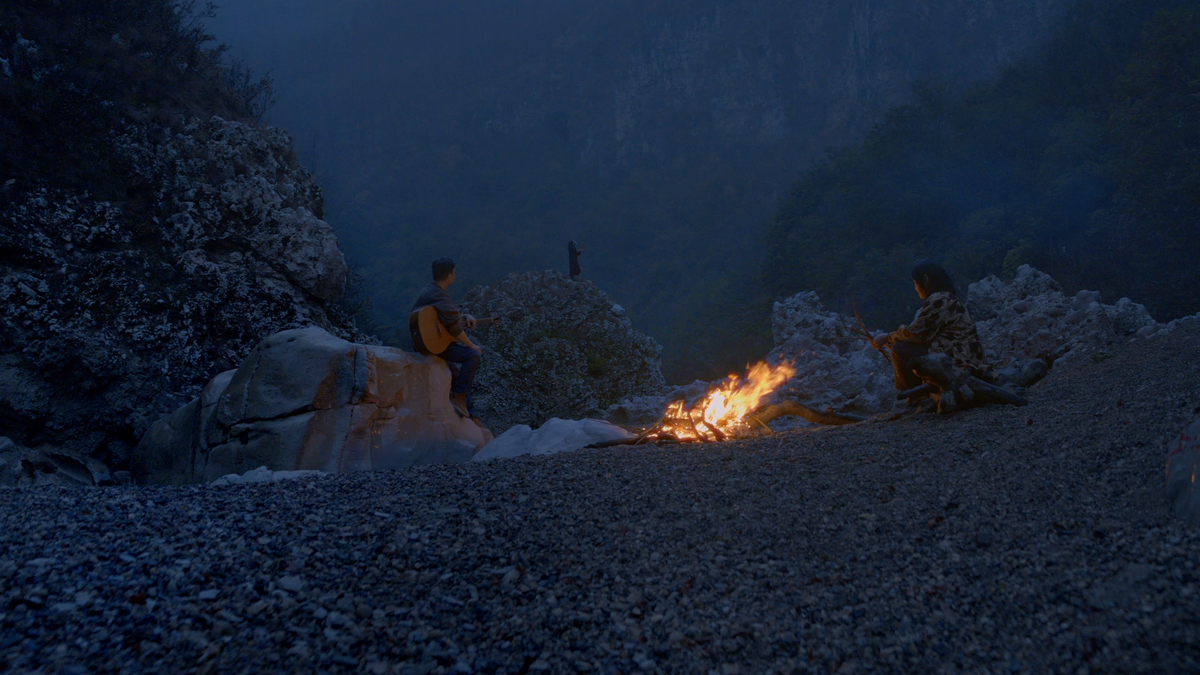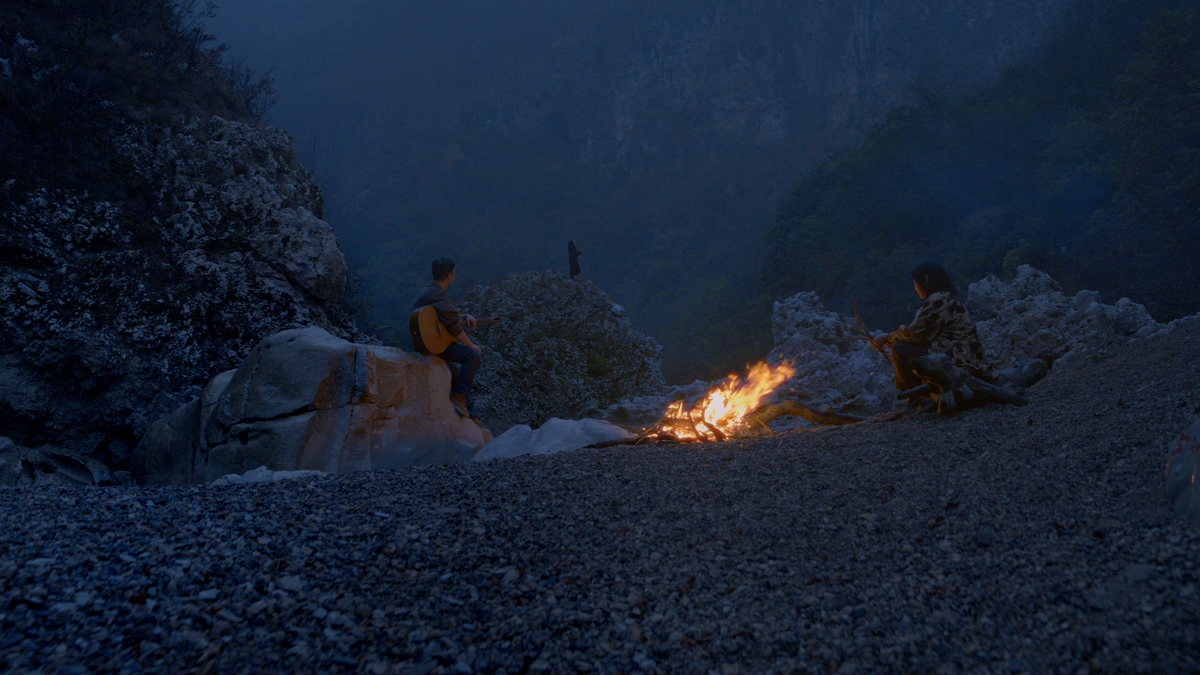The invention of the cinematograph coincided with the industrial transformation of Western society in the late nineteenth century. Thus cinema first emerged as a form of entertainment capable of recording the technological advancements that were revolutionizing daily life. The first cameramen, trained by the Lumière brothers, focused on documenting such life through carefully composed and sometimes staged snippets, but within a year of the first public screening of Workers Leaving the Factory (1895), artists from diverse entertainment backgrounds—including the circus and vaudeville—were working with the new technology to different ends.1 In his 2006 essay “The Cinema of Attraction[s],” Tom Gunning proposes that the audiences of early films were captivated by spectacular visual representations of worlds beyond ordinary sight.2 And so, almost from the moment of the medium’s invention, cinema shifted from capturing indexical images of the surrounding world to reflecting on what might be the oldest subject of art: humanity’s relationship to the cosmos.
Visionaries like the French illusionist Georges Méliès and his Spanish counterpart Segundo de Chomón pioneered a new type of film in which science and fantasy blended to produce an entirely new form of visual attraction. These so-called “trick” films ignited imaginations by inviting viewers into worlds beyond the everyday, notably the realm of outer space. While Méliès’s The Astronomer’s Dream (1898) and enduringly famous A Trip to the Moon (1902) are the best-known examples, other filmmakers from Ashley Miller to Enrico Novelli also ventured into space decades before astronauts set foot on the moon or returned with the first photographs from orbit.
These films, in contrast to the Lumières’ documentary realism, crafted short cosmic narratives that used special effects to trick the viewer’s eye, much like a magician’s illusion. Employing pioneering techniques such as stop motion, double exposure, and reverse footage, these filmmakers created images that defied conventional logics. In Segundo de Chomón’s silent film A Trip to Jupiter (1909), a king becomes obsessed with the planets after spending the afternoon with the royal astronomer. In his dreams, he builds a ladder and climbs up it to Jupiter, only to be pushed back down to earth by the anthropomorphized planet. As he falls, this cosmic colonizer suddenly wakes up and finds himself back in bed. In Méliès’s An Impossible Voyage (1904), a flying train transports a group of curious people into outer space. And no one can forget the astronomers’ journey to the moon in a bullet-shaped vessel as imag(in)ed in A Trip to the Moon.


Raqs Media Collective, The Bicyclist Who Fell into a Time Cone, 2023. Single-channel video, color, sound, 25:05 minutes. Courtesy of the artists. Originally commissioned by the Jencks Foundation, London.
These space-travel films are often treated by film scholars, including Gunning and Barry Keith Grant, as precursors to the science-fiction genre. They note how the tropes and special effects in these films established the visual themes of the space age. While space-travel films help to illustrate how the problem of depicting outer space has captivated filmmakers from the very inception of the medium, the bond between cinema and the cosmos transcends the fictional representation of space travel as a subject and might instead be understood as something more like an ontological affiliation.
In the first half of the twentieth century, as perceptions of time and space were transformed by new developments in science and the arts, so the aesthetics of film reflected a changing relationship with the surrounding world. Complex editing and increasingly sophisticated camerawork taught the viewer’s eye to move and think within shots as well as between them. Theorists such as Jean Epstein, Béla Balázs, and Siegfried Kracauer engaged deeply with the need to reimagine cinema’s role in a modern society shaped by new communication and transportation systems and associated changes in the perception of the everyday. Seeking to distinguish cinema from other art forms, film critic André Bazin proposed that the film screen was not merely a frame for the image but a boundless portal to a multifaceted reality, introducing the concept of its “centrifugal force.”
Bazin argued that, while arts such as theater are constrained by the physical range of actors and the duration of the live performance, cinema is unique in capturing and replicating movement in time. Inspired by Peter Bruegel the Elder’s Landscape with the Fall of Icarus (ca. 1560), Bazin envisions cinema as a cosmic force with the power to decenter a viewer’s perception of the world they inhabit. In Bruegel’s relegation of the drama of Icarus to the periphery of the painting, Bazin sees a precursor to the “centrifugal screen” characteristic of the evolved language of film. The indifference of the painting to the heroic human figure stands for the democratic nature of modern cinema, in which every element onscreen holds equal ontological weight.
This perspective challenged the traditional hierarchies of character-led narrative in theater and literature, redefining how one might interpret cinema in relation to the world as cosmos. In contrast to the static confines of a framed painting, Bazin’s “centrifugal screen” stresses cinema’s inherent ability to transcend its own technological boundaries, with the potential to expand infinitely out into the vast cosmos beyond the visible frame. He writes that
the outer edges of the screen are not, as the technical jargon would seem to imply, the frame of the film image. They are the edges of a piece of masking that shows only a portion of reality. The picture frame polarizes space inwards. On the contrary, what the screen shows us seems to be part of something prolonged indefinitely into the universe. A frame is centripetal, the screen centrifugal.3
For Bazin the centrifugal power of the cinema screen lies neither in film’s ability to produce familiar images nor in its capacity to tell a story, but rather in how it might open up the senses of the viewer to a truly democratic understanding of the surrounding world. In the context of Bazin’s film theory, cinema’s centrifugal force symbolizes an outward, expansive movement, akin to a force that pushes away from the center beyond the confines of the frame, offering an expansive experience of virtual reality that has not yet been represented.

Saodat Ismailova, Two Horizons, 2017. Two channel audio video installation, 23:30 minutes. Courtesy of the artist.

Agnieszka Polska, My Little Planet, 2016. Video (animation), 7:57 minutes. Courtesy Agnieszka Polska and Gallery Dawid Radziszewski, Warsaw.

Ho Rui An, Lining. 4k video and sound, 26 minutes. Courtesy of the artist.

Li Shuang, Æther (Poor Objects), 2021. Single-channel video, 18:28. Courtesy of artist. Commissioned by Rockbund Art Museum, Shanghai.

Rosalind Nashashibi, Denim Sky, 2022. Single-channel video (16mm transferred to HD), 67:24 minutes. Courtesy of the artist.

Entrance to Carsten Nicolai aka Alva Noto, COSMOS (Soundtrack for 14th Shanghai Biennale), 2023. 14 tracks, 117:30 minutes. Photo: Power Station of Art.
Saodat Ismailova, Two Horizons, 2017. Two channel audio video installation, 23:30 minutes. Courtesy of the artist.
Toward the end of his life Bazin reread the Icarus myth as expressive of the desire to overcome gravity, correlating it with technological advancements in cinema. In “The Myth of Total Cinema,” Bazin emphasizes the alignment of cinema’s founding myth with the nineteenth-century pursuit of an “integral realism,” arguing that cinema sought to recreate the world in its own image: a world freed from the irreversible passage of time and subjective artistic interpretation.4 Bazin notes that while the realization of Icarus’s dream of flight required the invention of the internal combustion engine, flight itself had been an aspiration of humanity ever since we first observed the skies. He suggests, by analogy, that technologies of image reproduction such as cinema are not only modern inventions but the fulfilment of ancient desires. Referring to Ovid’s version of the myth, he suggests that Daedalus was able to create wings for himself and Icarus only by imitating birds. In this way, Bazin frames the myth of total cinema as an aspiration towards the myth of integral realism: to emulate nature through technological innovation and, in so doing, to transform reality.
The concept of total cinema gives rise to the endeavor to recreate the world in cinema’s image. Yet even as many previously unattainable technological dreams become reality, none of them are sufficient to substitute for existing reality. In Bazin’s view, cinema has an asymptotic relationship to reality. The medium might approach perfect realism but can never attain what he calls “the myth of total cinema”—in which the boundaries between the world and its representation dissolve into an authoritarian totality—precisely because reality itself is constantly changing.
Over the span of its 130 years, cinema has continuously reinvented itself through technological advancements in sound, color, and screen format, leading to things like 3D movies and now AI-generated images. Often declared obsolete only to be reborn through new forms, cinema has been perpetually open to the unknown and yet-to-be-invented. In this context, the history of the cosmos in cinema might be understood as an ongoing attempt to move viewers beyond mimetic realism, towards something more fundamental and transformative: the jouissance of transcending the screen’s frame.
Reflecting on the limits of film’s technological evolution serves as a productive way to understand cinema’s relationship to the cosmos. One could see cinema’s pursuit of an integral realism—its quest to recreate the world in its own image—as aligning with the broader human aspiration to make sense of our existence in the universe. However, as Bazin observes, this pursuit is inherently asymptotic. The history of the cosmos in cinema is a never-ending artistic exploration, and creative interpretation, of humanity’s individual and collective relationship to an ultimately unrepresentable whole.


Solaristics—Taking inspiration from Stanisław Lem’s vastly influential 1961 science-fiction novel Solaris, this room responds to the question: Is it even possible for humans to conceptualize an extra-terrestrial intelligence? And might art help us to imagine a consciousness radically different from our own? Photo: Power Station of Art.
Regarded as the first publicly screened film in the history of cinema, Workers Leaving the Factory was projected by the Lumière brothers on March 22, 1895, in Paris. Capturing workers leaving the Lumière family’s Montplaisir factory during a midday break, the film, as Georges Didi-Huberman writes, marked the entrance of everyday people onto the cinematic stage. The Lumière brothers decided to reshoot the scene multiple times, creating different versions of the same event. This staging illustrates the inherent tension in cinema between the director’s control, the world recorded, and the audience’s freedom to interpret it. The reshoots not only complicate our understanding of the film as documenting a single historical event; they also underscore the manipulative nature of filmmaking by transforming the workers into actors to be directed.
In Early Cinema: Space Frame Narrative, ed. Thomas Elsaesser (British Film Institute, 1990).
André Bazin, “Painting and Cinema,” in What Is Cinema?, ed. and trans. Hugh Gray (University of California Press, 2005), 166.
André Bazin, “The Myth of Total Cinema,” in What Is Cinema?



